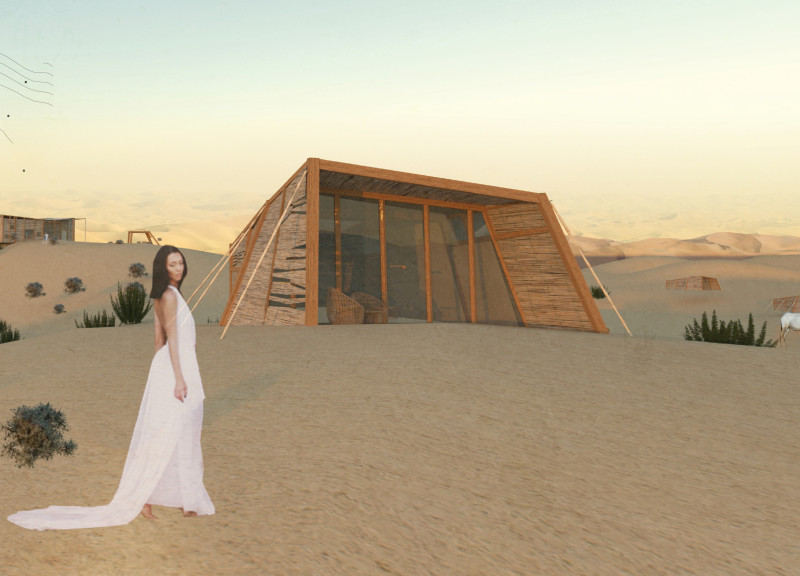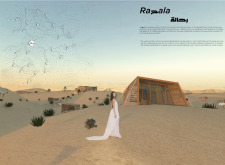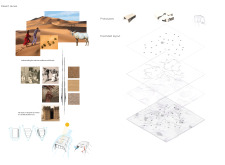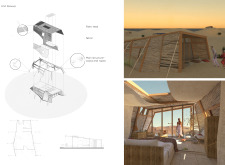5 key facts about this project
Rapala is located in the tranquil expanse of desert dunes and designed to enhance the experience of the landscape. The project represents a blend of traditional Bedouin architecture and modern design principles, focusing on mobility and sensitivity to the environment. Through its thoughtful planning, it aims to create a strong connection between visitors and the natural world.
Architectural Concept
The design is built around the idea of adaptability. Each unit resembles a Bedouin tent, allowing it to integrate with the changing dunes. This concept reflects the nomadic way of life while addressing the challenges posed by the desert's hot climate. Visitors can move freely between the structures and the open space, reinforcing the connection to the surroundings.
Spatial Arrangement
Rapala is organized into separate units and a common hub, which balances social interaction and personal space. Dining areas are available both indoors and outdoors, offering views of the surrounding dunes. An interior courtyard is included for stargazing at night, providing a sheltered place to enjoy the sky. This layout encourages visitors to engage with the environment both during the day and at night.
Materiality
The project uses natural materials to minimize its impact on the environment. Structures are mainly made from wood and ropes, while palm reed fabric enhances comfort and reflects traditional building techniques. This choice of materials supports the overall purpose of staying connected to the landscape while creating inviting living spaces.
Ecological Context
A notable feature is the educational exhibition space for Arabian oryx, which connects visitors to the region's biodiversity. This aspect reinforces the importance of ecological awareness while enhancing the overall experience. The exhibition creates a direct link between the environment, cultural heritage, and architecture, leading to a richer understanding of the desert.
Each element in Rapala contributes to a setting that encourages reflection and engagement with the surroundings. The careful interplay of design and landscape enhances the experience, inviting visitors to appreciate both the cultural and natural aspects of the desert.






















































